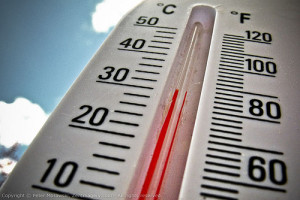Beat Sweltering Temps and Sky-high Energy Bills
There’s still time to capture some summer energy savings! Though people usually think about insulation and energy costs when the temperatures plunge, summer upgrades can contribute to energy savings throughout the year.
Moreover, some upgrades could help later on when you’re ready to sell your property. Why? Buyers are placing greater value on energy efficiency and lower energy costs. Here are some strategies to help you save energy and money.
1. Switch your lights. Analyze your lighting costs and swap your expensive incandescent bulbs for something more efficient.Yes, the upfront cost of efficient bulbs is higher than incandescent bulbs. But consider this:
- CLF bulbs last 5 to 10 times longer than incandescent bulbs and use 75 percent less energy
- LEDs last 15 to 50 times longer and use 80 percent less energy than an incandescent bulb
2. Cooling air. Though cooling costs usually make up 9 percent of a household’s annual energy use, it could be higher this year because of the excessive heat. Here’s how to boost efficiency:
- Keep it clean. Change air filters monthly. Clean filters can lower your air conditioner’s energy consumption by 5 to 15 percent, also clean evaporator and condenser coils. Dirty coils reduce the system’s cooling power and cause the system to run longer and boost costs. It also reduces the system’s longevity.
- Seal air leaks. Doing duct sealing and weather stripping jobs are as important during the summer as they are in the winter. After all, as much as 20% of the air moving through ducts is lost to leaks and bad connections.
- Program your cooling. Programmable thermostats also can help you all year. Use them correctly and they can save you up to $180 every year in energy costs.
3. Liquid resources. The simplest way to save water is by using less of it and heating it more efficiently.
- Insulate your water storage tank and set the thermostat to about 48.8C.
- Repair faucet and toilet leaks. A minor faucet drip seems innocuous, yet it adds up over time. Two leaky faucets that drip five drops of water a minute can add up to 347 gallons each year, according to U.S. Geological Survey.
- Install aerating, low-flow faucets and showerheads.
4. Aging appliances. Replacing old appliances with new, efficient models is the surest way to cut long-term energy costs. But if appliance upgrades aren’t in the budget, use what you have efficiently. Here’s how:
- Make sure you have full loads before doing laundry or running the dishwasher.
- Wash your clothes in cold water, not hot water, and save $63 per year, suggests the Alliance to Save Energy (www.ase.org).
- Turn off the drying feature on your dishwasher and let dishes dry naturally.
5. Vampire power. Some call it standby power and others call it phantom electricity. You know all those little dots of light on DVD players and coffee pots you see around your house at night? They’re all quietly sucking power.
6. Habit rehab. Some changes cost zero dollars and just entail habit changes. Here are the basics:
- Turn off lights, TVs, and computers each time you leave a room.
- Don’t cool the outdoors. Keep windows and doors shut when you’re running the air conditioner.
- Block peak summer rays and the heat gain they cause by closing blinds and drapes during the day.
- During peak heat, avoid warming up your house with the oven or stove. Try grilling outside or eating cold meals.
7. Tips and resources.
- Location-specific information. Given climate variations, it’s a good idea to check with local experts about the location-specific steps to take to cut energy use. What’s right for homeowners in Toronto won’t be the same for those living in Vancouver, for example.
- Tap incentives. It’s possible that you can further offset the cost of home upgrades through rebates and incentives.
- Find such incentives in Canada at:
www.ec.gc.ca/financement-funding/default.asp?lang=En&n=A730CEF3-1
Article Resource: Elyse Umlauf-Garneau of SRES



You must be logged in to post a comment.